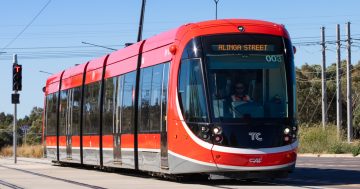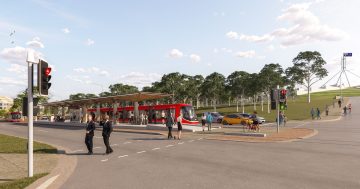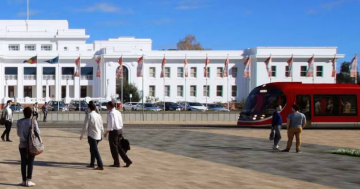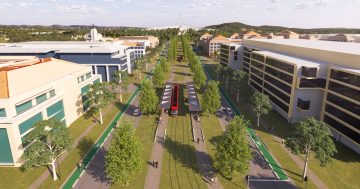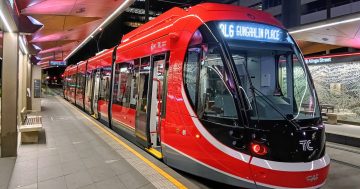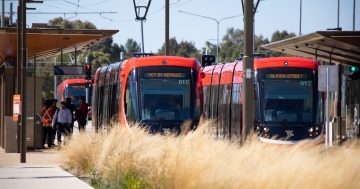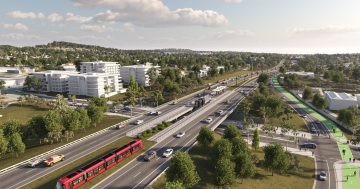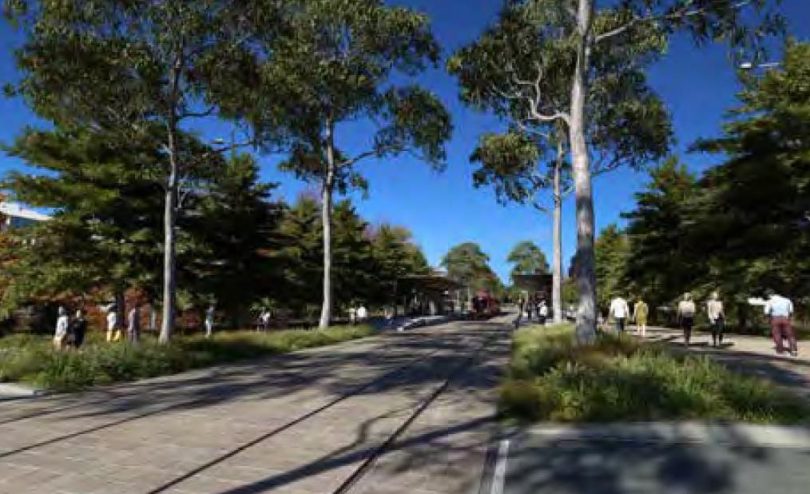
An artist’s impression of Windsor Walk, Barton, as part of the Stage 2 light rail route. Photo: Transport Canberra.
One of the biggest supporters of the light rail project in Canberra has joined a chorus of concerns about the Government’s preferred route for Stage 2 to Woden though Parkes and Barton in order to service their tourism and employment centres.
While acknowledging that the Parliamentary Triangle is at the centre of Canberra’s public transport system, the ACT Property Council argues in a submission to the Federal Parliamentary inquiry into Stage 2 that the Government should stick with the 2015 Light Rail Master Plan and maintain the integrity of the north-south corridor.
“Providing a frequent and accessible service to Barton is important but it should be done in a way that doesn’t negatively impact on the overall performance of the network,” it says.
The Property Council says that diverting away from the corridor and the Light Rail Master Plan to service employment at Barton, removes the route’s effectiveness as a rapid intertown public transport system but does offer alternatives with a branch line.
Journey times between Woden and the city are expected to be 25-30 minutes compared with the current Blue Rapid bus services trip of 13-16 minutes.
“For residents of Woden this will be a slower service than the current express bus service currently operating or driving a car. As a result, it is likely that express buses will continue to operate along Adelaide Avenue which will undermine the viability of light rail,” the submission says.
The Property Council says a diversion from the most direct and legible route at Barton would penalise many kilometres of route to and beyond Woden Town Centre, which is in urgent need of investment and renewal.
“This should be a prioritised with public transport that is competitive with the private car both in travel time and frequency,” it says.
“It is essential that passengers from Woden can expect to board, interchange and alight with ease and speed. A diversion from the primary spine would likely reduce both the incentive and the real-world ability to interchange as future stages of light rail come on-line, for example Woden to Russell/Airport or to Kingston/Fyshwick/Queanbeyan or to Belconnen.”
The Property Council says these interchanges will most readily occur at Capital Circle and at London Circuit in the City Centre, and the preferred route removes a potentially significant interchange that will penalise the system overall.
“It highlights a lack of alignment between strategic planning and infrastructure planning,” it says.
It provides options in its submission including a direct route via Capital Circle.
Located on the eastern side of Capital Circle, this route would have a stop serving both Parliament House and the Barton office precinct, and be 1.12km shorter than the preferred Barton diversion route.
Another option is a direct route via Capital Circle plus a branch from the Canberra Avenue line to Manuka, which is 0.20km shorter than the preferred route.
The Property Council’s final option is a direct route via Capital Circle plus a branch line to Kingston Railway Station via Brisbane Avenue Barton, 1.88km longer than the preferred route.
Should the Government review its preferred route? Does the Barton deviation undermine the efficiency of the public transport network?












